It is mainly used in digital products, mobile phones, portable power supplies, laptops and other electronic devices. 18650 lithium battery and lithium polymer battery are commonly used.
7.2V 5200mAh Consumer Lithium Ion Battery Nominal voltage:7.3V Nominal capacity:5200mAh Battery dimension:75*72*19.5mm Application:Electronic products
It is mainly applied in the fields of medical electronics, photovoltaic energy storage, railway infrastructure, security communication, exploration and mapping, etc. Energy storage/power lithium battery, lithium iron phosphate battery, polymer lithium battery, 18650 lithium battery are commonly used.
14.4V 6800mAh Industrial Robot Lithium Ion Batteries Nominal voltage:46.8V Nominal capacity:80000mAh Battery dimension:400×400×100(Max) Application: Robot, AGV, RGV
It is mainly used in the fields of special special, special, naval ships,special, weapons, and high energy physics. Ultra-low temperature lithium ion battery, high temperature lithium ion battery, lithium titanate battery and explosion-proof lithium battery are commonly used.
-40℃ Low Temperature Beidou Terminal Lithium Ion Battery Nominal voltage:3.7V Nominal capacity:2700mAh Battery dimension:71*46*10mm(Max) Application: Special equipment, handheld terminal equipment
The model name of cylindrical lithium ion battery is generally 5 digits. The first two digits are the diameter of the battery, the middle two digits are the height of the battery, the last digit 0 represents cylindrical battery. The unit is millimeter.
Prismatic lithium ion battery usually refers to the aluminum or steel case prismatic lithium ion battery, widely used in exploration and mapping, medical equipment, portable testing equipment.
Long ago, steel lithium ion batteries are used commonly. Due to the large weight of the steel case, poor safety, but good stability, many manufacturers increase battery safety performance by optimizing the design structure by safety valve, PTC and other devices. Some manufacturers replace the steel case with an aluminum case and flexible package, such as the current cell phone battery.
The aluminum case lithium ion battery is lighter and slightly safer than the steel case lithium ion battery.
Pouch cell has the advantages of light weight, low mould cost and high safety. It gradually expands its market share.
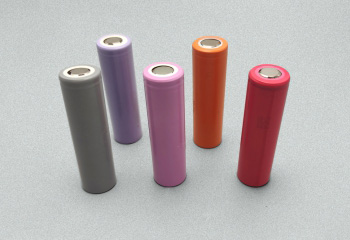
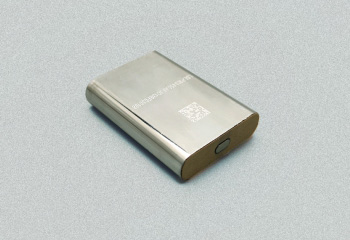
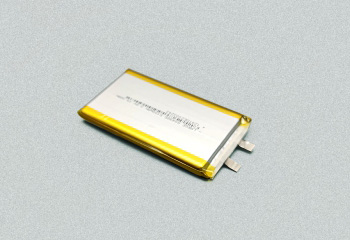
Currently, there are four kinds of anode materials for lithium ion batteries:
The chemical formula for lithium cobalt oxide is LiCoO ₂. It is a kind of inorganic compounds, and is usually used as positive electrode materials for lithium ion batteries.
Lithium manganese is mainly spinel manganese, which was first prepared by Hunter in 1981 as a positive electrode material with three-dimensional lithium ion channels.
Lithium iron phosphate is a lithium ion battery anode material. Lithium iron phosphate batteries, named after their anode material, are also known as LiFePO4 battery and LFP battery.
Lithium nickel manganese cobalt is the key ternary anode material for lithium ion battery, which has higher specific capacity and lower cost than the other anode material.
| Item | LiCoO2 | LiNiCoMnO2 (ternary) | LiMn2O4 | LiFePO4 |
| Compacted Density (g/cm3) | 2.8~3.0 | 2.0~2.3 | 2.2~2.4 | 1.0~1.4 |
| Specific Surface Area (m2/g) | 0.4~0.6 | 0.2~0.4 | 0.4~0.8 | 12~20 |
| Volume (mAh/g) | 135~140 | 140~180 | 90~100 | 130~140 |
| Voltage Platform (V) | 3.7 | 3.6 | 3.7 | 3.2 |
| Cycle Performance | ≥500times | ≥500times | ≥300times | ≥2000times |
| Safety Performance | bad | good | better | best |
| Scope of Application | small and medium size battery |
small batteries/small power battery |
power battery low cost battery |
power battery/power supply with super capacity |
Liquid lithium ion battery uses liquid electrolytes, which are organic solvents and lithium salts.
Polymer lithium ion battery uses solid polymer electrolyte, which can be either "dry" or "colloidal". Most manufacturers use polymer colloidal electrolyte currently. The polymer matrix tends to be HFP-PVDF, PEO, PAN and PMMA.
7.2V Lithium Polymer Battery Smart Battery for Portable Medical Devices Nominal voltage: 7.4V Nominal capacity: 2600mAh Application: portable medical devices
"All-solid-state lithium ion battery" is a kind of lithium battery with solid electrode and electrolyte materials used in the working temperature range and without any liquid components, so it is called "all-solid-state lithium ion battery with electrolyte".








23 Years' Expertise in Customizing Lithium Ion Battery
Large Electronics (Hong Kong) Limited was established in 2002. It is a national-level high-tech enterprise providing customized solutions and products of maximum reliable maximum safe special lithium ion battery system.

High Energy Density
(Ternary, lithium cobalt oxide system)
Mass energy density 300watt-hour/kg
Volume energy density 700 watt-hour/kg
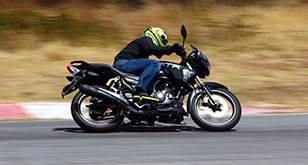
High Rate
High Rate
(Ternary, Lithium Cobalt Oxide, Lithium
Iron Phosphate System)
100C continuous discharge
The temperature controls within 40℃.

High Temperature
(Ternary, Lithium Iron Phosphate System)
The high temperature of 80℃ lasts for 200 cycles.
Store at 85℃ for 48 hours.
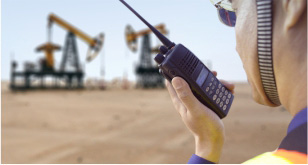
Good Safety
(Modified ternary chemical system)
190~200Wh/kg high energy density
Meet Ex ia IIA/Ex ib IIB T1~T4
explosion-proof criteria.

Low Temperature Charging
(Ternary, Lithium Iron Phosphate System)
-20℃ 0.5C charging,
charge-discharge cycle≥300 cycles,
-40℃ 0.2C charging,
charge-discharge cycle≥300 cycles.

Low Temperature Discharging
(Ternary, Lithium Iron Phosphate System)
-40℃ high rate 5C continuous discharging,
over 80% capacity retention ratio,
-50℃ low temperature discharging,
over 75% capacity retention ratio.
Low Temperature Large Current 24V Emergency Starting Power Supply Battery specification: 25.2V28Ah (lithium battery) , 27V300F (supercapacitor pack) Charging temperature:-40℃~+50℃ Discharging temperature: -40℃~+50℃ Starting current: 3000A
-40℃ Low Temperature Battery
7.4V 17.5Ah 18650 Special Laser Gun Battery
Nominal voltage: 7.4V
Nominal capacity: 17500mAh
Charging temperature: 0 ~ 45℃
Discharge temperature: -40 ~ 60 ℃
Low Temperature High Energy Density Rugged Laptop Polymer Battery Battery specification: 11.1V 7800mAh -40℃ 0.2C discharge capacity ≥80% Dustproof, resistance to dropping, anti - corrosion, anti - electromagnetic interference
The potential difference between the anode and cathode of lithium ion battery is called the nominal voltage of lithium ion battery. The nominal voltage is determined by the electrode potential of the electrode material and the concentration of the internal electrolyte.
The terminal voltage of the battery in the open circuit state is called the open circuit voltage. The open circuit voltage of the battery is equal to the potential difference between the anode and cathode.
Working voltage refers to the voltage displayed during the discharge process after the battery is connected to the load. It is also known as discharge voltage. The initial discharge voltage is called the initial voltage.
12V Lithium Ion Battery
24V Lithium Ion Battery
36V Lithium Ion Battery
48V Lithium Ion Battery
The capacity of a lithium ion battery under certain discharge conditions is called the capacity of a lithium ion battery and is represented by the symbol C. The commonly used unit is the ampere hour, or ampere-hour (Ah) or milliampere-hour (mAh) for short.
The capacity of lithium ion battery is affected by the anode material, battery temperature, discharge rate and voltage.
The internal impedance of lithium ion battery refers to the impedance caused by the current passing through the lithium ion battery. The internal impedance will affect the voltage of lithium ion battery.
The cycle life of a lithium ion battery is generally expressed by cycle number. One cycle represents a complete charge and discharge cycle of the lithium ion battery (that is, the lithium ion battery is charged from empty to full state and then discharged from full to empty state).
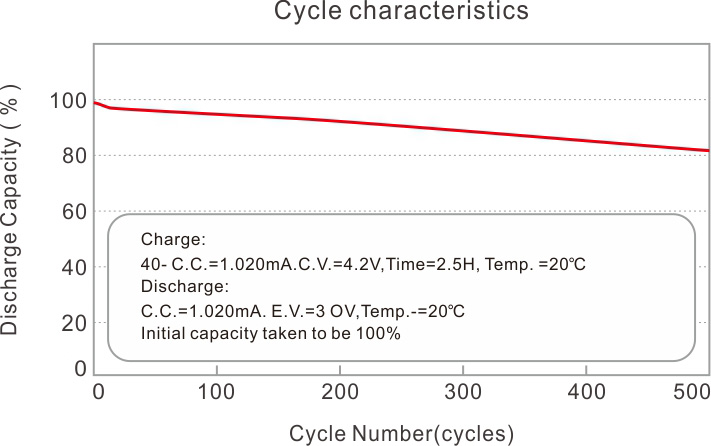
Note: Lithium ion battery has good cycle characteristics and can maintain about 80% capacity after 500 cycles.
Discharge rate refers to the current of lithium ion battery during discharge, which is generally expressed as C. The formula is as follows:
Discharge Rate = Discharge Current/Rated Capacity
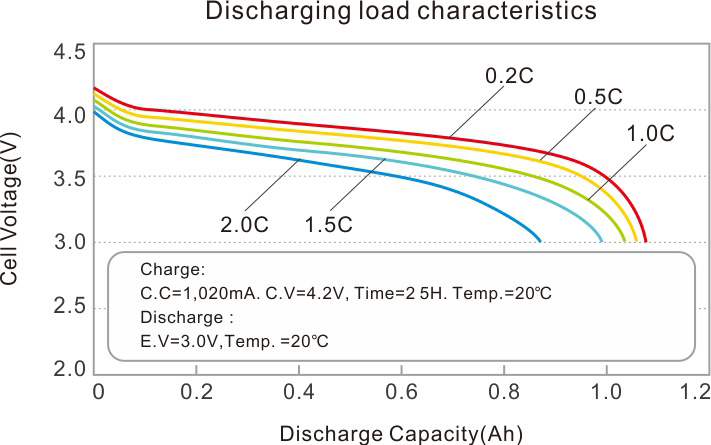
Note: Because lithium ion battery has organic solvent electrolytes, the conductivity is typically only a few hundredths of that of lead-acid or alkaline battery electrolytes. Therefore, when the lithium ion battery is discharged at a high current, it is too late to replenish Li+ from the electrolyte, and then the voltage will reduce.
The operating temperature of lithium ion battery refers to temperature of the charging and discharging environment that lithium ion battery can adapt to.
When lithium ion battery is at low temperature, the discharge platform has a certain reduction. When the temperature is high, the circulation performance of the battery will be affected, and the battery will slightly swell. Therefore, the battery is generally recommended to operate at 0-40℃.

Low Temperature Discharge Characteristic Curve of Lithium Ion Battery
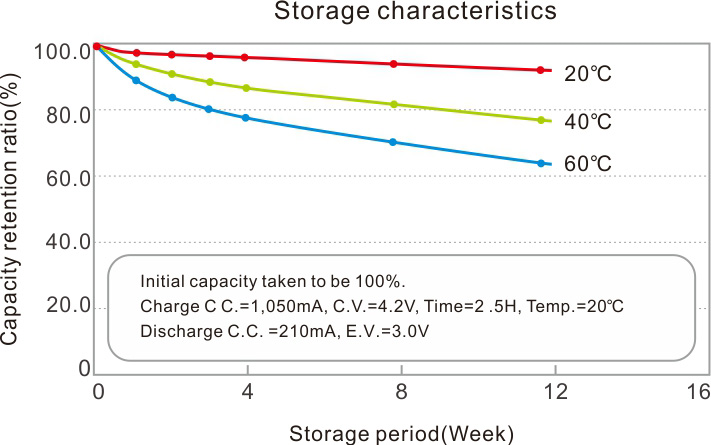
High Temperature Discharge Characteristic Curve of Lithium Ion Battery
| Item | Lithium Ion Battery | Lead Acid battery | NI-MH Battery |
| Energy Density (wh/kg) | 200~260wh/kg | 50~70wh/kg | 40~70wh/kg |
| Open Circuit Voltage (v) | 3.6V | 2.0V | 1.2V |
| Cycle Life (Times) | 300-2500 | 400-600 | 300-350 |
| Charging Speed | Quick | Slow | Slower |
| Memory Effect | No | No | Yes |
| Environmental Performance | Lower Pollution | High Pollution | Low Pollution |
Lithium ion battery pack mainly refers to the processing and assembly of lithium ion battery, which is mainly to process the battery cell, PCM, BMS, connector, label, holder, cases, lead and terminal into products according to customer’s requirements.
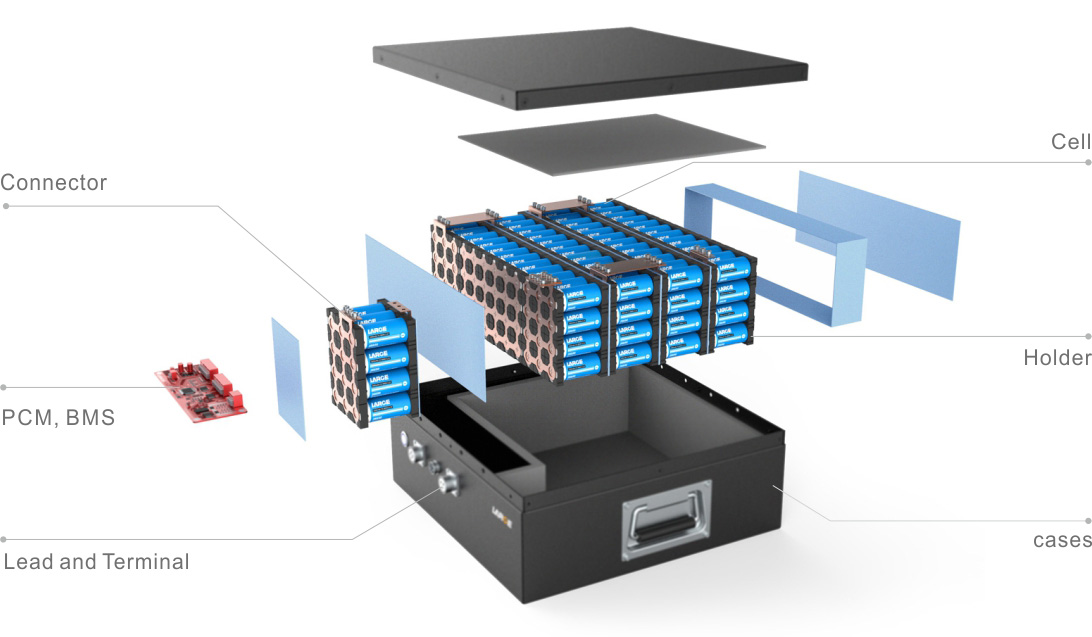
The best lithium ion battery has to pass UL2054 safety standard (lithium ion battery) and has to finish the tests below:
The best lithium ion battery has to pass UL2054 safety standard (lithium ion battery) and has to finish the tests below:
0.2C5A discharge performance, 1C5A discharge performance, high temperature performance, low temperature performance, charge retention and cycling.
Constant heat and humidity, vibration, collision and free drop
Impact test, thermal shock, overcharge, short circuit and other safety tests
Product Certification
Certification Details of Major Global Countries and Regions(Battery)
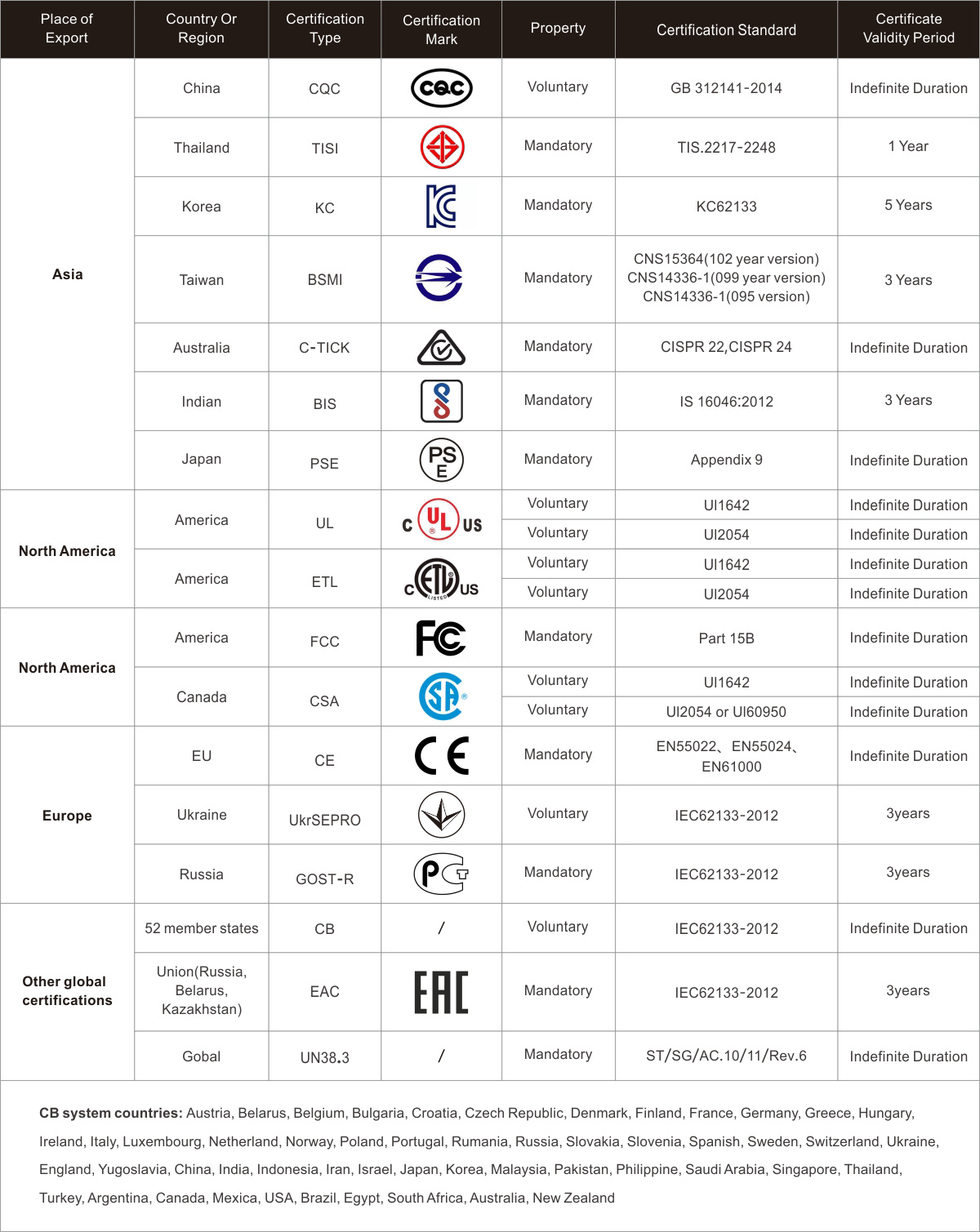
Lithium battery can be transported by air, by ship, or by vehicles and train. The most commonly used is air transport and marine transport. Because lithium is a metal particularly prone to chemical reactions and combustion, improper lithium battery package and transportation may lead to combustion and explosion.
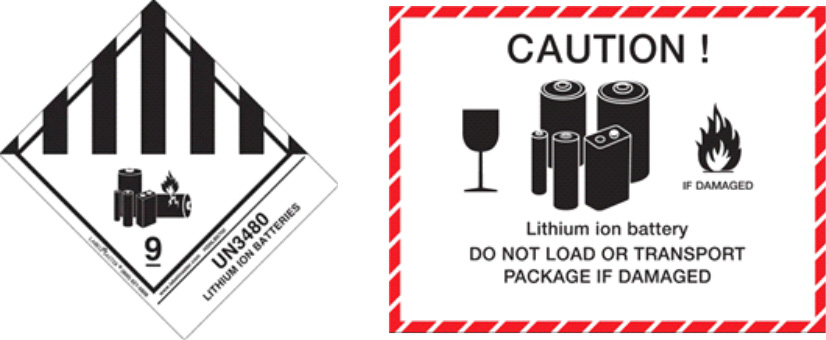
The price of single lithium ion battery cell is mainly influenced by brand and quality, while the price of lithium ion battery pack has affected by many factors:
Cell Model
Voltage
Capacity
Demand and Design of PCM
Demand and Design of Case
Storage of Lithium Ion Battery - The most critical storage conditions for lithium ion batteries are temperature and humidity. It is recommended to store battery at 20℃. Make sure the warehouse is moisture proof and humidity proof. Don't make lithium ion battery in a state of power loss. Do not extrude or impact the battery. Do not store battery in strong static or high magnetic field.
Lithium Battery Charge and Discharge - Do not overcharge the battery. Do not use inferior charger. Do not use high power charger a lot. Do not discharge more than 80% of the battery capacity.